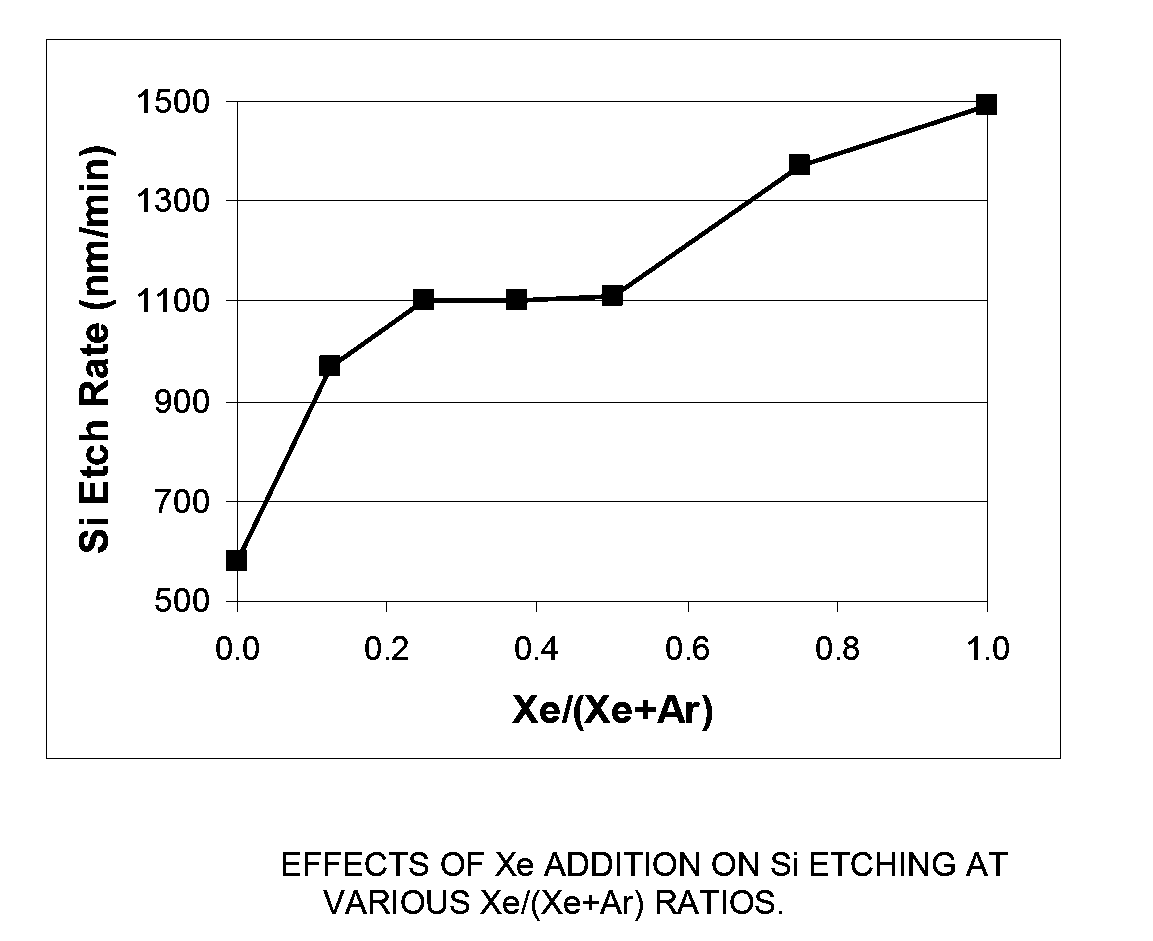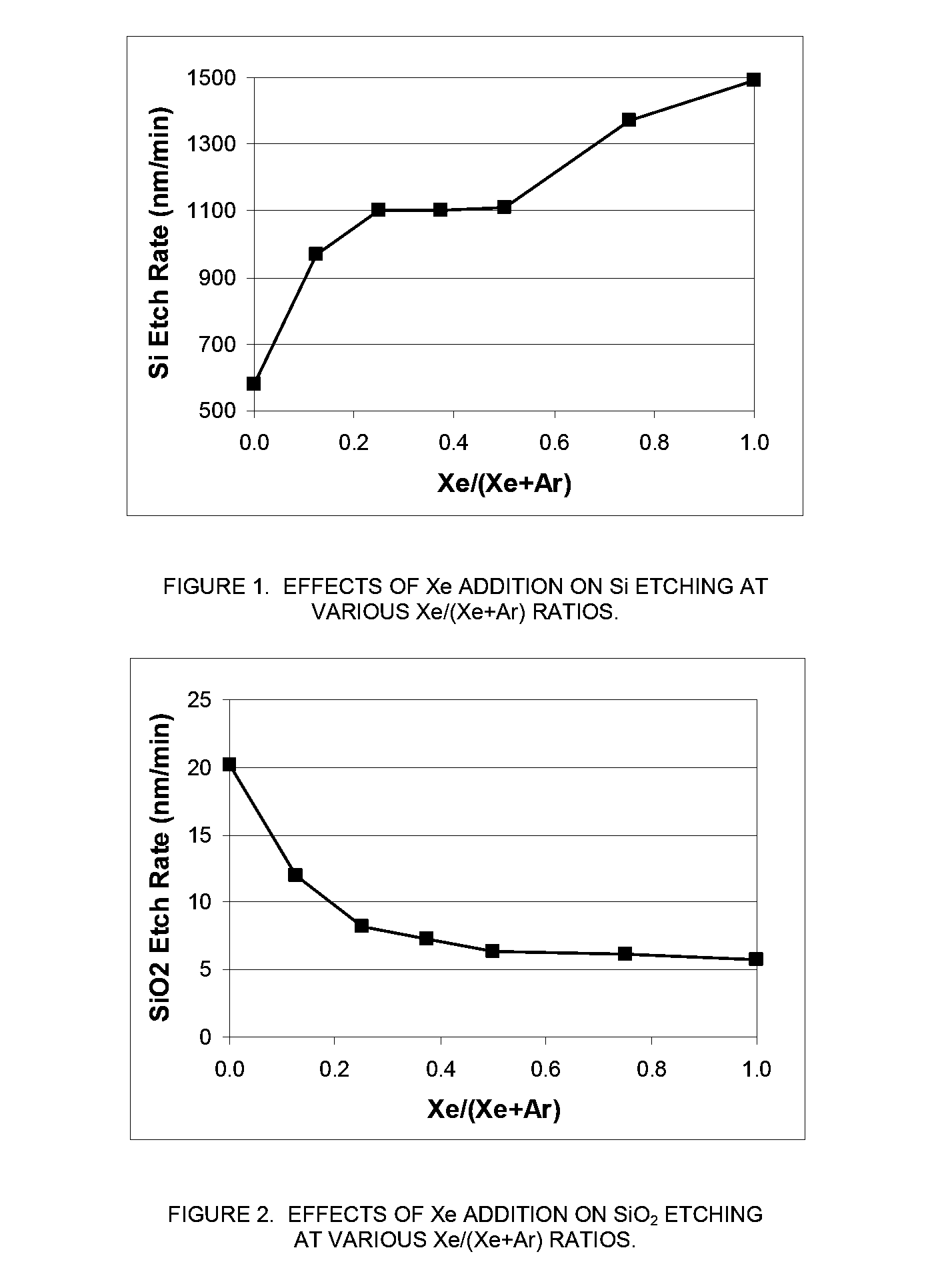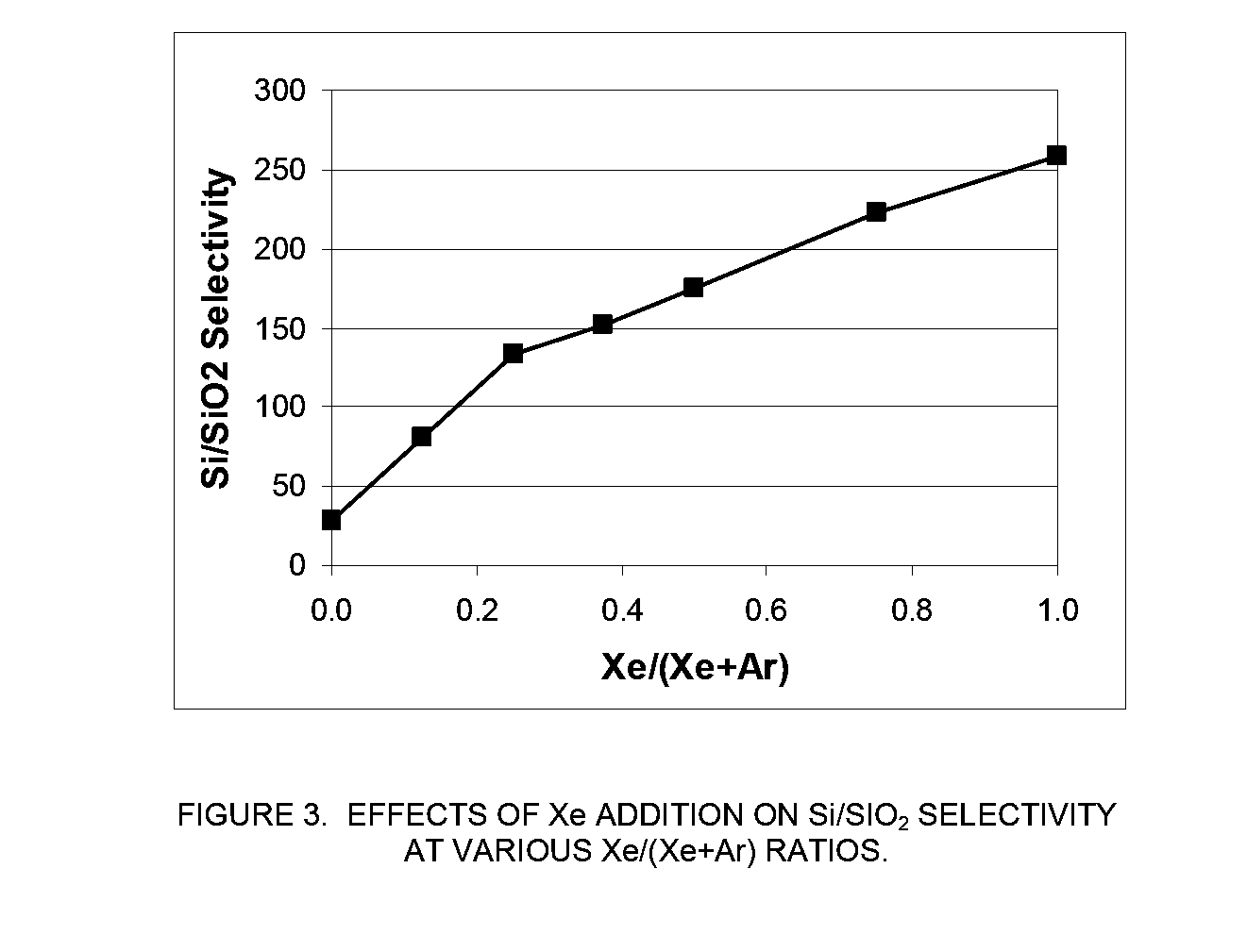Selective Etching and Formation of Xenon Difluoride
a technology of xenon difluoride and selective etching, which is applied in the field of electromechanical devices, can solve the problems of ion source region deposition and contamination of surfaces, defects of electronic product components, and high cost of xenon difluorid
- Summary
- Abstract
- Description
- Claims
- Application Information
AI Technical Summary
Benefits of technology
Problems solved by technology
Method used
Image
Examples
example 1
Effectiveness of XeF2 in Etching of Deposition Materials at Various Temperatures and Pressures
[0065]In this example, the etch rates for TiN, SiO2, and SiN were determined using XeF2 as the etchant at various temperatures and pressures. Experimental samples were prepared from Si wafers coated with thin films of TiN, SiO2, and SiN. Etch rates were calculated by the thin film thickness change between the initial film thickness and that thickness after a timed exposure to the etching or processing conditions.
[0066]To effect etching bulk XeF2 gas was introduced from a cylinder into the reactor chamber through an unused remote plasma generator. The XeF2 gas pressure in the reactor chamber was held constant by turning off the flow from the cylinder once the desired pressure was reached.
[0067]The test coupons were placed on the surface of a pedestal heater which was used to maintain different substrate temperatures. The results are shown in Table I below.
TABLE IETCH RATES FOR VARIOUS MATERI...
example 2
Selective Etching of Si to SiO2
[0069]In this example, an MKS Astron remote plasma generator was mounted on top of a reactor chamber. The distance between the exit of the Astron generator and the sample coupon was about six inches. The remote plasma generator was turned on but the pedestal heater in the reactor chamber was turned off. The chamber was kept at room temperature. The etch rate of both Si and SiO2 substrates using remote plasma was measured.
[0070]The process gas to the remote plasma was NF3 and it was mixed with a second gas stream in various amounts. The second gas stream was comprised of either Xe, argon (Ar), or a combination thereof. The total gas flowrate to the reactor chamber was fixed at 400 sccm and the NF3 flowrate was fixed at 80 sccm. While keeping the total flowrate of the second gas stream at 320 sccm, the ratio of the flowrate of Xe to the total flowrate of the second gas stream (Xe / (Ar+Xe)) was varied between 0 (only Ar as the additional process gas) and 1...
example 3
Selective Etching of Molybdenum(Mo) to SiO2
[0076]A large 2.5 m length 25 cm diameter cylindrical SS etch chamber was used to determine etch rate of another common sacrificial material in MEMS applications: molybdenum (Mo). The remote plasma was generated using a water-cooled MKS Astron AX7670 6 slpm unit. The plasma source was connected to the chamber by a 10 cm long transport tube with a 4 cm inner diameter. The sample was placed 2 feet from the loading / unloading end of the tube.
[0077]At 2.75 torr, 275 sccm NF3 flow and 600 sccm Xe or Ar flow, etch rate of Mo=1.1 microns / min. Etch rate of SiO2 was 82 nm / min for NF3 / Ar gas mixture and was 26 nm / min for NF3 / Xe mixture. Thus, selectivity of Xe / NF3 mixture was at least 3 times that of Ar / NF3 mixture. Note that Mo etch rate is limited by the surface oxide. With a surface preparation treatment to break its native oxide, the etch rate of Mo can be enhanced to >2.7 micron / min.
PUM
| Property | Measurement | Unit |
|---|---|---|
| Temperature | aaaaa | aaaaa |
| Pressure | aaaaa | aaaaa |
| Volumetric flow rate | aaaaa | aaaaa |
Abstract
Description
Claims
Application Information
 Login to View More
Login to View More - R&D
- Intellectual Property
- Life Sciences
- Materials
- Tech Scout
- Unparalleled Data Quality
- Higher Quality Content
- 60% Fewer Hallucinations
Browse by: Latest US Patents, China's latest patents, Technical Efficacy Thesaurus, Application Domain, Technology Topic, Popular Technical Reports.
© 2025 PatSnap. All rights reserved.Legal|Privacy policy|Modern Slavery Act Transparency Statement|Sitemap|About US| Contact US: help@patsnap.com



